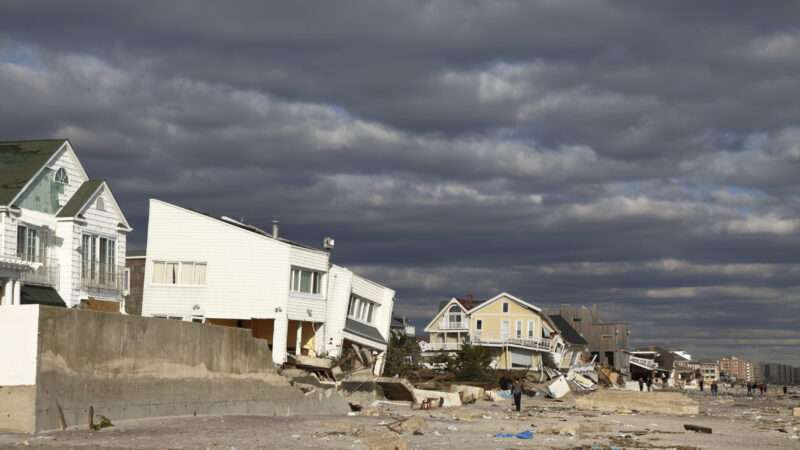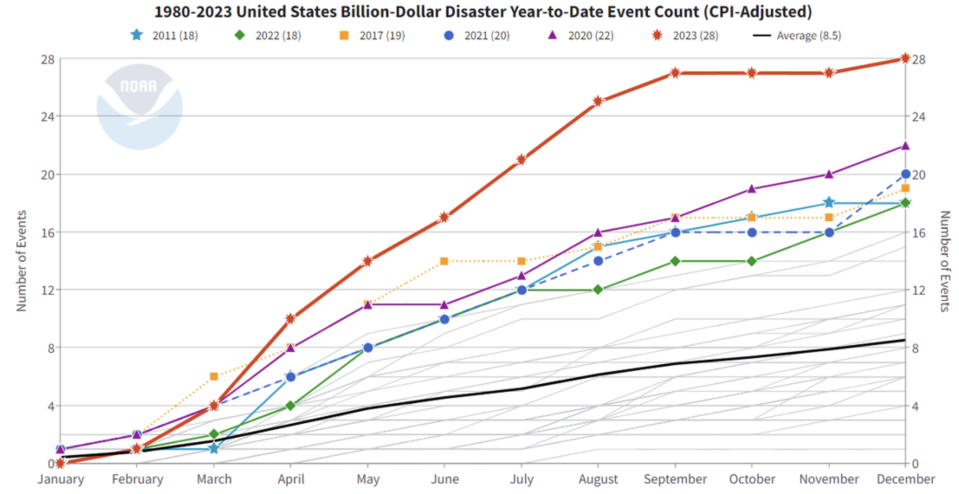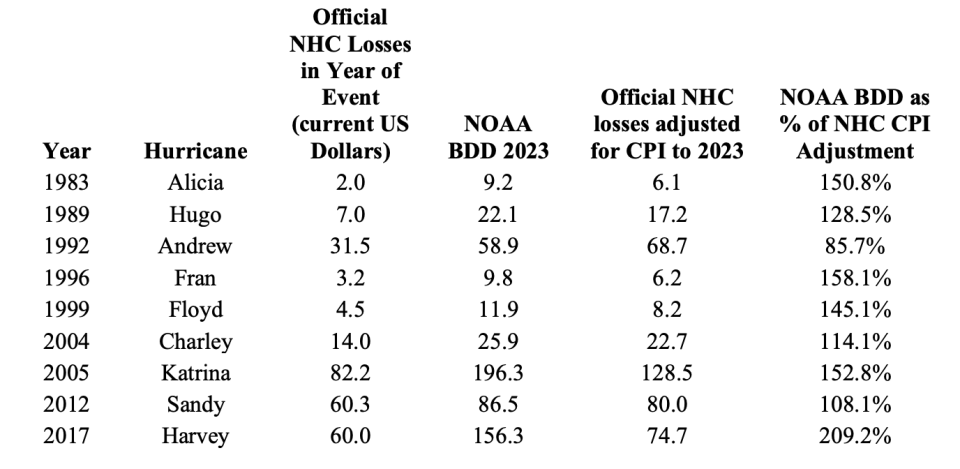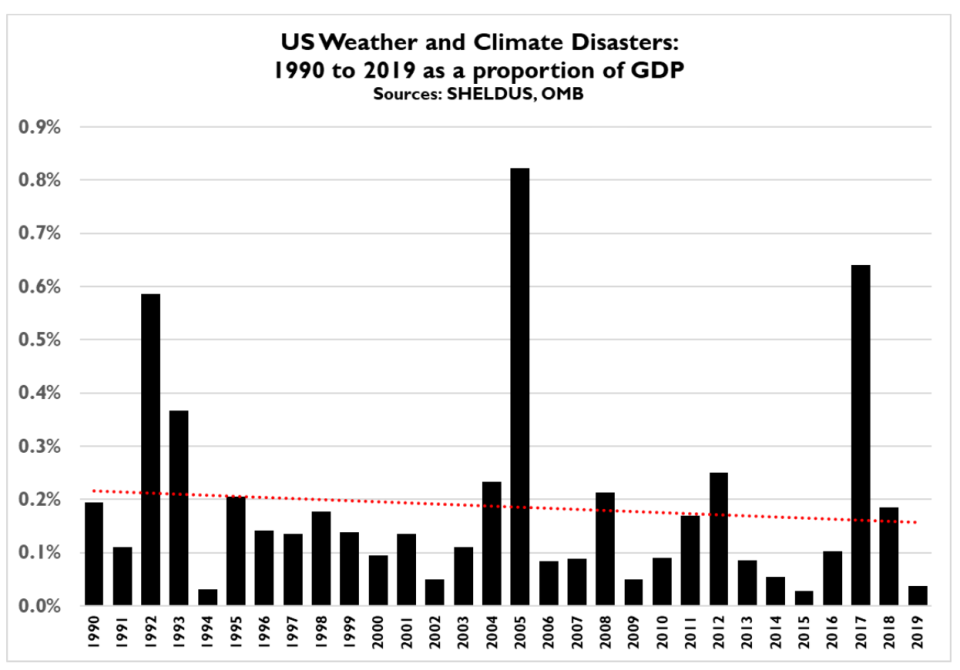NOAA Billion-Dollar Weather Disasters Are Not Evidence of Climate Change

"Billion-dollar weather and climate disasters broke U.S. record in 2023, NOAA says," reported PBS earlier this year. "NOAA: US sees record number of billion-dollar weather, climate disasters in 2023," observed Fox Weather. "U.S. Hit by Record Number of High-Cost Disasters in 2023," declared The New York Times.
These and many more headlines were based on the National Oceanic and Atmospheric Administration's (NOAA) January press release reporting the agency's annual tally of weather disasters. It states:
The NOAA National Centers for Environmental Information (NCEI) has released the final update to its 2023 Billion-dollar disaster report, confirming a historic year in the number of costly disasters and extremes throughout much of the country. There were 28 weather and climate disasters in 2023, surpassing the previous record of 22 in 2020, tallying a price tag of at least $92.9 billion.

In a new article in the journal npj Natural Hazards, University of Colorado Boulder political scientist and climate policy expert Roger Pielke Jr. challenges the scientific integrity of these annual NOAA climate and weather disaster reports.
"The point here is not to call into question the reality or importance of human-caused climate change—it is real, and it is important," explains Pielke. "Rather, the question is whether the NOAA billion dollar disaster time series provides evidence of detection or attribution of changes in the climate of extreme weather events in the United States, as frequently claimed."
For example, citing the NOAA dataset, the Fifth National Climate Assessment (2023) declares that "the number and cost of weather-related disasters have increased dramatically over the past four decades, in part due to the increasing frequency and severity of extreme events," adding that "there is increasing confidence that changes in some extreme events are driven by human-caused climate change." Relying on NOAA data, the White House issued a statement in 2023 on behalf of President Joe Biden that asserted "climate change related extreme weather events still pose a rapidly intensifying threat—one that costs the U.S. at least $150 billion each year."
While the NOAA notes that "the increase in population and material wealth over the last several decades are an important cause for the rising costs," the agency also claims that "it's likely that human-caused climate change is having an influence on the rising costs of billion-dollar disasters." It is this latter assertion that Pielke's analysis challenges. Specifically, Pielke argues that "NOAA incorrectly claims that for some types of extreme weather, the dataset demonstrates detection and attribution of changes on climate timescales. Similarly flawed are NOAA's claims that increasing annual counts of billion dollar disasters are in part a consequence of human caused climate change."
Just how the NOAA calculates the number and costs of each disaster is methodologically opaque. The agency says that the costs of the disasters it includes are inflation-adjusted over time. However, Pielke identifies numerous examples in the NOAA's tally in which the costs of specific disasters have been unaccountably boosted well above inflation adjustments. For instance, Pielke compares the National Hurricane Center's (NHC) losses for several major hurricanes with the NOAA's billion-dollar disaster (BBD) losses for each of those hurricanes.

In these examples, the NOAA has significantly boosted the calculated hurricane losses well above the inflation-adjusted figures. Why? The NOAA says that "one of the key transformations" in its calculations "is scaling up insured loss data to account for uninsured and underinsured losses, which differs by peril, geography, and asset class." However, as Pielke points out, "NOAA makes no details available on the methodology or basis for such transformations, nor their impact on loss estimates, nor how these transformations may change over time." Consequently, this fails the requirement for data transparency that would enable outside analysts to evaluate the sufficiency and accuracy of the calculations.
Pielke points out that the NOAA does acknowledge that disaster losses are rising in part due to increasing wealth that puts more assets at risk as they build up along vulnerable coastlines and wildland-urban interfaces. However, the agency does not adjust its calculations for such changes in asset exposure or vulnerability. Pielke argues that a better way to track how extreme weather events are affecting the U.S. economy is to calculate such losses as a percentage of gross domestic product (GDP) over time. Such a calculation finds that weather and climate disaster losses as a percentage of U.S. GDP show no increase between 1990 and 2019.

"The most appropriate data for investigating detection and attribution of changes in climate variables will always be climate data, and not economic data," concludes Pielke. "Any claim that the NOAA billion dollar disaster dataset indicates worsening weather or worsening disasters is incomplete at best and misleading at worst."
The post NOAA Billion-Dollar Weather Disasters Are Not Evidence of Climate Change appeared first on Reason.com.

